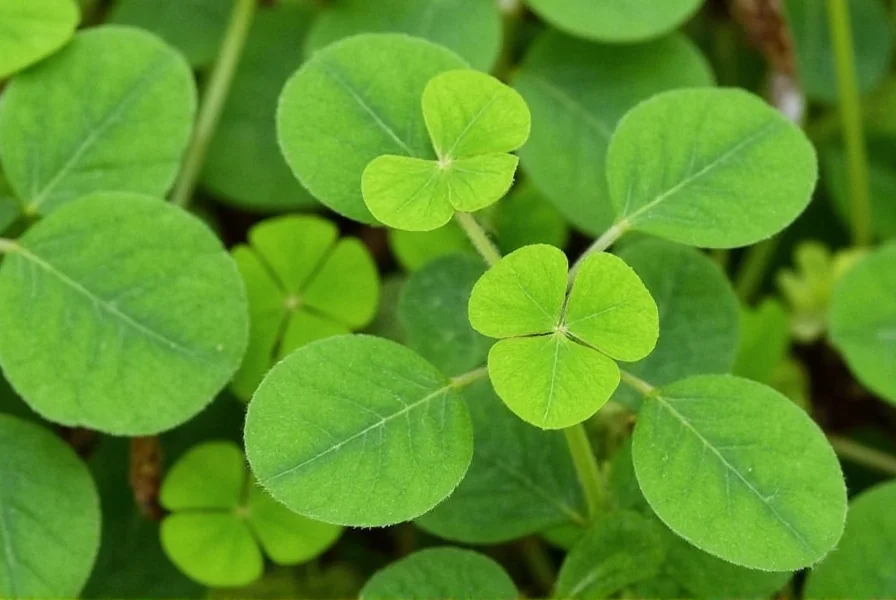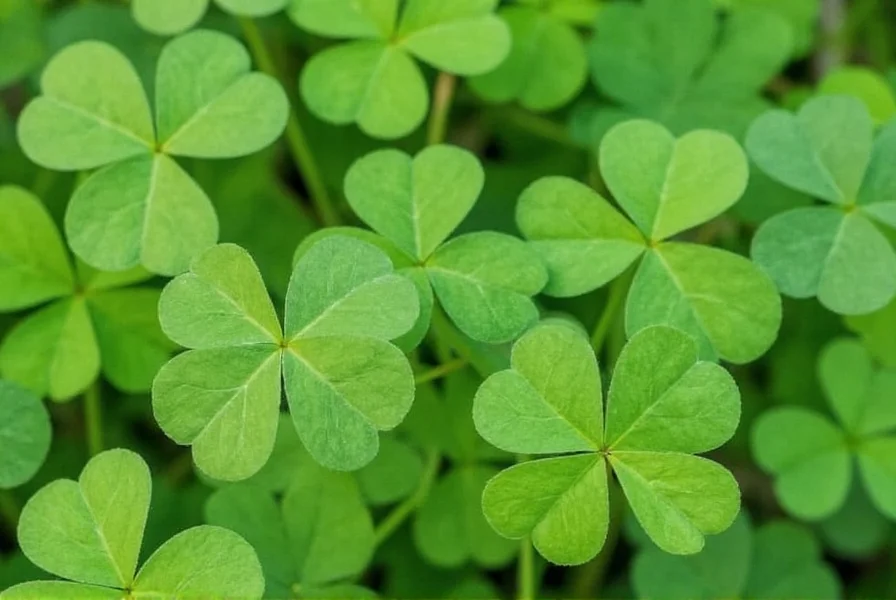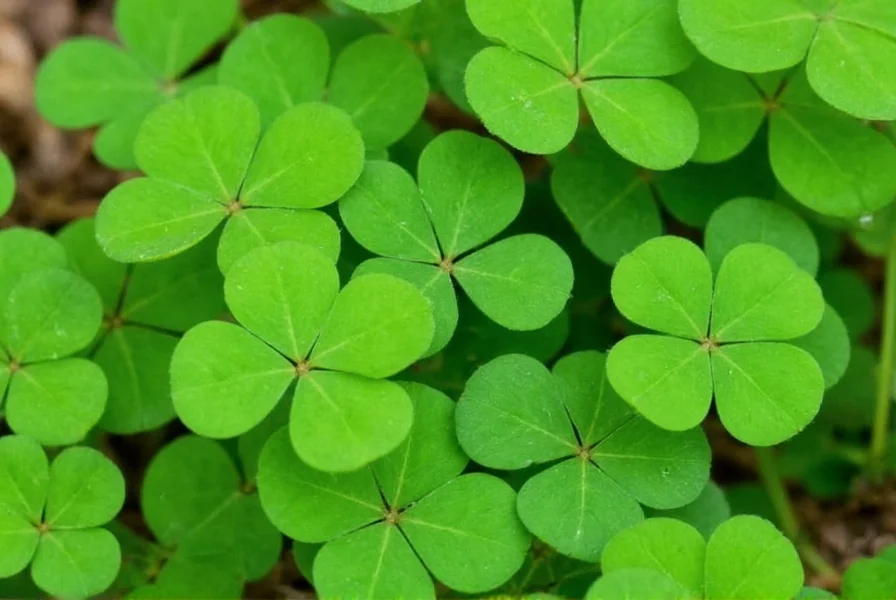Indy Clover is a specific cultivar of white clover (Trifolium repens) developed for agricultural use, particularly valued for its persistence in pasture systems, nitrogen-fixing capabilities, and tolerance to grazing pressure. This hardy perennial legume features small white flowers, trifoliate leaves, and a low-growing habit that makes it ideal for both forage production and turf applications.
When gardeners and farmers search for information about indy clover characteristics, they're typically seeking reliable details about this specific white clover variety's performance in various growing conditions. Unlike generic white clover information, Indy Clover represents a cultivated strain with distinct advantages for sustainable agriculture and lawn management.
Botanical Classification and Development History
Indy Clover belongs to the Fabaceae family and is scientifically classified as Trifolium repens 'Indy'. Developed through selective breeding programs, this cultivar emerged from efforts to create a more persistent white clover variety suitable for the Midwest climate conditions, particularly in Indiana (hence the "Indy" designation).
Unlike many short-lived white clover varieties, Indy Clover demonstrates exceptional winter hardiness and drought tolerance. Research from agricultural extension programs shows it maintains stand persistence 25-40% longer than common white clover varieties under rotational grazing systems. This indy clover for pasture advantage makes it particularly valuable for livestock operations seeking sustainable forage options.

Physical Characteristics and Growth Patterns
Indy Clover displays the classic trifoliate leaf structure common to white clovers, but with some distinguishing features:
| Characteristic | Indy Clover | Common White Clover |
|---|---|---|
| Stolon Length | 15-25 cm | 20-40 cm |
| Leaf Size | Medium (1.5-2.5 cm) | Variable (1-3 cm) |
| Flower Size | Small, compact heads | Larger, more open heads |
| Cold Tolerance | USDA Zones 3-9 | USDA Zones 4-8 |
The plant establishes through stolons (above-ground runners) that root at nodes, creating a dense mat that effectively suppresses weeds. Its flowering period typically runs from late spring through early fall, with the characteristic white flower heads that occasionally have a pinkish tinge.
Growing Requirements and Establishment
For those researching how to successfully implement indy clover planting guide practices, understanding its specific growing requirements is essential. Unlike some clover varieties that struggle in challenging conditions, Indy Clover demonstrates remarkable adaptability.
Successful establishment begins with proper seedbed preparation. The ideal soil pH ranges from 6.0 to 7.0, though Indy Clover shows better tolerance to slightly acidic conditions than many other white clover varieties. When planting indy white clover seed, use 1-2 pounds per acre when drilling or 2-3 pounds when broadcasting. The optimal planting depth is 1/8 to 1/4 inch—any deeper significantly reduces germination rates.
Timing matters considerably for successful establishment. In northern regions, late summer (August-September) planting allows seedlings to establish before winter. In southern areas, early spring (February-April) planting works best. When overseeding existing pastures, frost seeding during late winter can be effective as freezing and thawing cycles work seeds into the soil.
Agricultural and Ecological Benefits
The nitrogen-fixing capabilities of Indy Clover represent one of its most valuable attributes for sustainable farming systems. Through symbiotic relationships with rhizobia bacteria, this legume can fix 100-150 pounds of nitrogen per acre annually, reducing or eliminating the need for synthetic nitrogen fertilizers in mixed pasture systems.
Research from agricultural universities demonstrates that incorporating indy clover for lawns and pastures improves soil structure through its extensive root system. The plant's deep taproots (reaching 18-24 inches) break up compaction and improve water infiltration. Additionally, its dense ground cover significantly reduces soil erosion compared to grass monocultures.
From a livestock perspective, Indy Clover provides high-quality forage with 18-25% crude protein content when managed properly. Unlike some legumes that cause bloat, white clover varieties like Indy present minimal bloat risk when included at 30-40% of the pasture mix. The plant's low-growing habit makes it particularly suitable for rotational grazing systems.
Management Considerations and Challenges
While indy clover maintenance is generally straightforward, several factors require attention for optimal performance. Unlike some clover varieties that dominate pastures, Indy Clover maintains a balanced presence when mixed with compatible grasses like orchardgrass, tall fescue, or timothy.
Proper grazing management proves critical—allow plants to reach 6-8 inches before grazing and never remove more than 50% of the leaf area. This indy clover vs other clover varieties management approach ensures sufficient leaf area remains for photosynthesis and regrowth. During drought periods, reduce stocking rates to prevent overgrazing.
Pest management typically presents minimal challenges, though aphids and clover root weevils occasionally require attention. The plant demonstrates good resistance to many common clover diseases, particularly when proper rotation practices are followed. In turf applications, maintaining mowing heights above 2 inches preserves the plant's competitive advantage against weeds.
Practical Applications Across Settings
Indy Clover's versatility extends beyond traditional pasture use. Increasingly, homeowners and landscapers discover the benefits of indy clover for lawns as a sustainable alternative to traditional turfgrass. Its ability to thrive with minimal inputs makes it ideal for eco-conscious landscaping.
In agricultural settings, the variety works particularly well in:
- Perennial pasture mixes for dairy and beef operations
- Hay and silage production systems (when mixed with grasses)
- Cover cropping rotations for soil improvement
- Erosion control on slopes and waterways
- Wildlife habitat enhancement areas
For homeowners, incorporating Indy Clover into lawn mixes reduces water usage by up to 50% compared to traditional turfgrass while maintaining an attractive appearance. The plant's natural flowering provides valuable nectar sources for pollinators, supporting biodiversity in residential landscapes.

Conclusion: Maximizing Indy Clover's Potential
Understanding the specific attributes of Indy Clover helps farmers and gardeners make informed decisions about its incorporation into their land management systems. This specialized white clover variety offers distinct advantages for sustainable agriculture, including improved persistence, nitrogen fixation, and adaptability to various growing conditions.
Whether establishing new pastures, renovating existing forage systems, or creating eco-friendly lawns, proper implementation of indy clover planting guide principles ensures optimal performance. By respecting its growth habits and management requirements, land managers can harness the full benefits of this valuable legume for improved soil health, reduced input costs, and enhanced ecosystem services.
Frequently Asked Questions
How does Indy Clover differ from other white clover varieties?
Indy Clover demonstrates superior persistence compared to common white clover, with 25-40% longer stand life in pasture systems. It features slightly smaller leaves, more compact growth habit, and better cold tolerance (surviving in USDA Zone 3), making it particularly suitable for northern climates and intensive grazing systems.
What is the optimal seeding rate for establishing Indy Clover?
For pure stands, use 2-3 pounds of seed per acre when broadcasting or 1-2 pounds when drilling. When incorporating into pasture mixes, reduce to 0.5-1 pound per acre. Always plant at 1/8 to 1/4 inch depth, as deeper planting significantly reduces germination success for this small-seeded legume.
Does Indy Clover require special inoculation before planting?
Yes, like all white clovers, Indy Clover requires inoculation with the appropriate strain of rhizobia bacteria (typically Group B or Clover-specific inoculant) to establish effective nitrogen fixation. Most commercial seed comes pre-inoculated, but the inoculant remains viable for only 3-6 months, so check expiration dates or re-inoculate if using older seed.
How does Indy Clover perform in drought conditions?
Indy Clover shows better drought tolerance than many white clover varieties due to its deeper root system (reaching 18-24 inches). During dry periods, it goes dormant but typically recovers quickly with rainfall. For best results during drought, reduce grazing pressure and maintain at least 3 inches of residual height to protect the plant crowns.
Can Indy Clover be used in lawn applications?
Yes, Indy Clover works well in lawn mixes, particularly in eco-friendly or low-input turf systems. It requires less water (up to 50% less than traditional turfgrass), fixes nitrogen to reduce fertilizer needs, and provides attractive white flowers that support pollinators. Maintain mowing heights above 2 inches for best performance in lawn applications.











 浙公网安备
33010002000092号
浙公网安备
33010002000092号 浙B2-20120091-4
浙B2-20120091-4